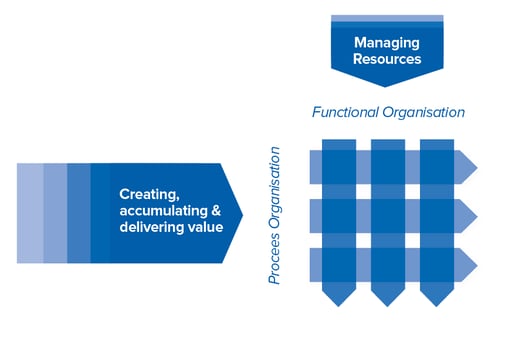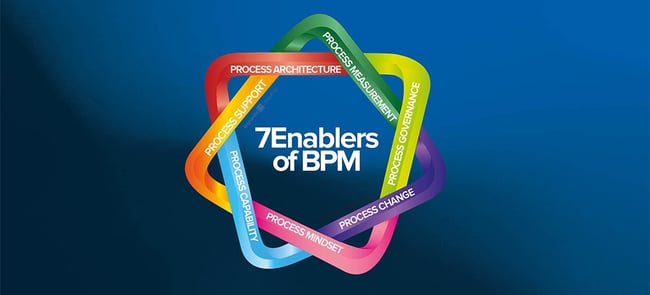It’s Time
For most organizations, the time has passed when improving performance can be achieved by ‘simply’ reducing budgets and assuming those affected will adjust to the change. After years of budget cuts and efficiency dividends, the easy changes are done, contingency resources are extinct, and further change is deep, structural, and difficult. The need to ‘do more with less’ seems both inevitable and impossible.
Neither can any organization focus only on the ‘negatives’. They also need to think more broadly in analyzing business processes so as to discover innovations to be embraced as well as problems to be solved. Organizations must be good at identifying weaknesses and circumstances that threaten process performance, but that is not enough. They also need to look for characteristics that make a process strong, and for opportunities to do something new. In this disruptive world where the unthinkable and unexpected quickly become unexceptional, there is an urgent need to discover disruptive ‘solutions looking for a problem’ as well as identifying the more traditional ‘problems looking for a solution’.
The Big Picture
It is no longer enough, if it ever was, to focus on immediate process performance issues (cost, time, defects, etc.) and ignore opportunities for improvement. Henry Ford reduced the time it took to build a Model T chassis from 12½ to 1½ hours. That was a prodigious feat, an innovation whose impact is still felt today, but would have been pointless if no one wanted to buy a car. In 1976, with a 90% share of the US market, Eastman Kodak was ubiquitous; by the late 1990s it was struggling, and by 2012 it was in bankruptcy protection. Despite having invented the first digital camera in 1975, Kodak was too slow to react to a serious decline in photographic film sales. At its peak, Kodak also had a great story to tell about increasing operational cost-efficiency and process improvement. In reality, though, it became efficient at producing a product few wanted, and good at delivering services few needed. The current market capitalization of Kodak is approximately US$800 million; the equivalent figure for GoPro is US$6.5 billion[1].
In times where established business models are overwhelmed by digital substitutes, every organization must expect to have its own ‘Kodak moment’.
Process-based management
By definition, business processes are the only way any organization can deliver value to customers and other stakeholders. By themselves, the separate functional areas of an organization cannot deliver value to external parties.

Figure 1: Process & functional organizations
As illustrated in Figure 1 we traditionally manage organizations via the template laid out by the organization chart. Yet not one of the entities shown on any organization chart can, by itself, deliver value to an external customer. The reality is that we create, accumulate, and deliver value by collaborating across that chart. Value is accumulated, not up and down the functional organization as represented in the chart, but across the organization as the various parts collaborate to create, accumulate and deliver value in the form of a desired product or service.
We manage resources vertically using the organization chart. We create and deliver value horizontally across the organization, and the key management artifact should be the business process architecture.
It follows that an organization also executes its strategic intent via its business processes.
The power of process-based management is in understanding what work is required and how it gets done, and based on that understanding, eliminating impediments, streamlining activities, removing waste, and capitalizing on opportunities for innovation.
The focus is on how the process, including all of the people and resources involved, delivers value to customers and other stakeholders. This cross-functional focus is missing in many organizations, where it is replaced with an internal management emphasis guided by the organization chart.
In this context, where cross-functional processes are key to the delivery of value to customers and other stakeholders (including the organization itself), the improvement and management of processes, through both problem resolution and idea harvesting, is critical to the optimization of performance.
Process-based management, more commonly known as BPM (business process management), refocuses management efforts and thinking on how value is delivered to customers and other stakeholders. The focus is on what value should be delivered and to whom, how that work gets done, what impedes it being done in the most efficient and effective way, and how that might be changed in small or radical ways. It is about identifying the value pathways and finding both idea-driven and performance-driven ways to improve their effectiveness.
BPM is not about technology , it is not an IT solution or a project, but a pragmatic management approach. BPM is a management philosophy.
In these times, when most organizations are under considerable pressure to simultaneously reduce costs, enhance products and services, deal with new competitors, and be more attentive to customers, process-based management offers a practical and pragmatic solution.
Enabling BPM
Discovering, documenting, improving, and actively managing cross-functional business processes will expose significant opportunities for getting more work done with the same, different, or perhaps even fewer, resources.
There are seven elements, the 7Enablers of BPM, that come together to create and sustain process-based management:
- Discovery, understanding, and documentation of the organization’s processes and related resources in a hierarchical model—process architecture
- Defining process performance measures and measurement methods, collecting and reporting process performance data—process measurement
- Reimagining, and responding to, process performance anomalies, innovation opportunities, and general process hygiene—process governance
- Continuously finding ways to close process performance gaps by eliminating problems and capitalizing on opportunities—process change
- Creating an environment where the organization, its people, and their teams are always conscious of the processes in which they participate—process mindset
- Developing the tools and skills required throughout the organization to identify, analyze, improve, and manage business processes—process capability
- Providing the support required throughout the organization to develop, sustain and realize the benefits of process-based management—process support
The first three enablers—architecture, measurement, governance—are tangible artifacts, whereas the final three—mindset, capabilities, support—are more abstract (but no less important). Change is in the middle and is the central objective of process management.
To thrive, perhaps even to survive, in times when ‘doing more with less’ seems both inevitable and impossible, executives need to step back from day-to-day functional issues and reimagine their organizations as value creation and delivery flows. Process-based management delivers a practical, proven approach and the 7Enablers of BPM represents a breakthrough in management practice.
These enablers are shown in the first image above. A Mobius strip format is used to highlight the interdependencies between the elements. The enablers are interconnected—change one and one or two others are likely changed, change several and they will all be changed. The 7Enablers represent the key levers of process-based management.
The core artifact is the process architecture since documenting the key processes is the necessary first step. Once documented, processes can be measured and once measures are available, governance arrangements to define who should respond to performance reports and change opportunities are required. These first three enablers (architecture, measurement, governance) are the ‘physical infrastructure’ on which the rest is built. Continuous process change is the cornerstone of process-based management. Without process improvement, both small changes and large innovations, what is the purpose of process analysis and management? For process management and improvement to become ubiquitous, it must be embedded in the organization culture and mindset. Having a central specialist support group to do all process work, does not scale and will soon impose a bizarre restriction on process management and improvement work. Therefore, it is necessary to build the capability for identifying, analyzing, improving, and managing business processes throughout the organization.
The 7Enablers is a collective of mutually supportive prerequisites for successful and sustained process-based management.
[1] Approximate market capitalization figures from the New York Stock Exchange (https://www.nyse.com/index). Accessed 12 May 2015.





